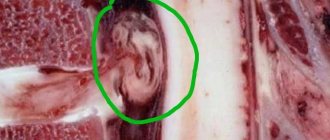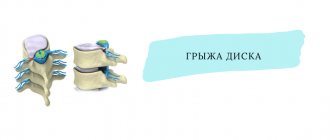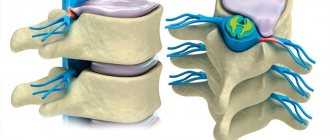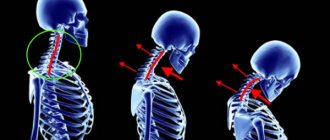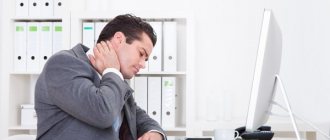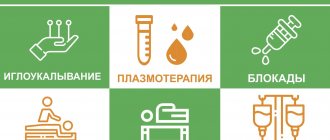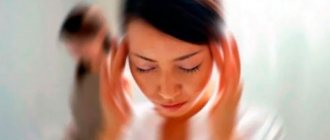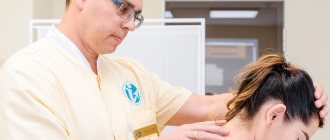The question of how to treat a hernia in the cervical spine has several answers today. This can be treatment with medication, surgery, or treatment based on the principles of kinesitherapy, i.e. treatment with movement. Drug treatment means the use of widely advertised non-steroidal anti-inflammatory drugs - tablets, ointments, injections, as well as bandages, corsets, mandatory restrictions on movement. In some cases, acupuncture, mud therapy and physical therapy are recommended. Massage and manual therapy are often prescribed for cervical hernia. However, many of the listed procedures are not aimed at curing the disease, but only at relieving pain. Therefore, their use often does not solve the problem, but simply masks it. Over time, painkillers and anti-inflammatory drugs stop working, and the person is left alone with pain. Now about the surgical treatment of spinal hernia - operations to remove spinal hernia, of which, indeed, a great many have been developed and the entire Internet is replete with offers in Russia and abroad. Firstly, like any surgical intervention, spinal surgery does not guarantee an absolute result, and sometimes it simply turns out to be useless. Secondly, scars and adhesions are sure to remain in the area of the operation, which most often lead to new problems. In addition, surgery always means restriction of movement, a large number of medications, a corset or bandage, and disability and loss of ability to work for a long time or forever. And finally, an intervertebral hernia of the cervical spine, the treatment of which was carried out surgically, has many possible complications in the future - from medicinal erosions and ulcers of the gastrointestinal tract to the involvement of the vertebrae and intervertebral discs adjacent to the operated one in the pathological process and the appearance of new hernias. And the most important thing is that after the operation, your back will never be the same as before.
Hernia of the cervical spine
A herniated cervical spine is accompanied by pain in the neck, severe “shooting” pain with sudden movements, pain in the arm, numbness, tingling in the wrists and fingers, headache, and dizziness. Usually they offer to treat hernias with pills, blockades, and in some cases surgery is recommended, despite the huge risk. Doctors at Dr. Bubnovsky’s center have a unique technique and have been treating spinal hernias without surgery or pills for more than twenty years.
The method is based on kinesitherapy according to the method of Dr. Bubnovsky. This is the right movement that activates the body's resources and eliminates the very cause of the disease.
Causes
A herniated disc occurs due to malnutrition of the intervertebral discs and subsequent degeneration.
The reason is disruption and spasm of the deep back muscles due to a long stay in a forced position, a sedentary lifestyle, and constant work at the computer.
Due to muscle spasm, blood supply to tissues is disrupted, intervertebral discs become fragile and deformed. In this condition, the disc cannot perform a shock-absorbing function, and inflammation and pain occur near the damaged discs.
Treatment
The unique technique developed by Dr. Bubnovsky has been successfully treating hernias without surgery for many years and relieving pain syndromes without drugs.
The goal of the author’s technique is to restore muscle mobility, get rid of spasm and pain, and provide nutrition to the joints and discs of the spine.
Before the start of classes, the center’s specialists will conduct an examination and draw up an exercise program taking into account the condition of your musculoskeletal system and individual characteristics.
Classes are conducted by instructors under the supervision of kinesitherapists using the Bubnovsky multifunctional simulator, which activates the work of the deep muscles of the whole body. The simulator allows you to avoid axial load on the spine and joints, so the patient does not experience discomfort and additional pain.
The exercise program includes alternating strength training to strengthen muscles, as well as stretching to develop muscle elasticity. The technique also actively uses thermal procedures: a sauna combined with cold douches.
Sign up for a consultation
Prices in your city
Russia
- Russia
- Kazakhstan
- Azerbaijan
- Belarus
- Kyrgyzstan
- Latvia
- Uzbekistan
- Ukraine
Moscow
- Adler
- Almetyevsk
- Anapa
- Angarsk
- Arkhangelsk
- Astrakhan
- Balashikha
- Barnaul
- Belgorod
- Biysk
- Blagoveshchensk
- Bratsk
- Bryansk
- Vladivostok
- Vladimir
- Vologda
- Voronezh
- Grozny
- Ivanovo
- Irkutsk
- Yoshkar-Ola
- Kazan
- Kaliningrad
- Kaluga
- Kemerovo
- Korolev
- Kostroma
- Kotlas
- Krasnodar
- Kyzyl
- Leninogorsk
- Magnitogorsk
- Makhachkala
- Moscow
- Naberezhnye Chelny
- Nazran
- Nalchik
- Nizhnekamsk
- Nizhny Novgorod
- Novodvinsk
- Novokuznetsk
- Novosibirsk
- October
- Omsk
- Pavlovo
- Penza
- Permian
- Petrozavodsk
- Pskov
- Pushkino
- Rostov-on-Don
- Ryazan
- Samara
- Saint Petersburg
- Saransk
- Saratov
- Sarov
- Sevastopol
- Sergiev Posad
- Smolensk
- Sochi
- Stary Oskol
- Sterlitamak
- Tambov
- Tomsk
- Tula
- Tyumen
- Ulan-Ude
- Ulyanovsk
- Ufa
- Khabarovsk
- Khimki
- Chelyabinsk
- Yaroslavl
Select a branch
- m. Aviamotornaya - Moscow, st. Aviamotornaya, 10, building 2
- m. Academicheskaya - Moscow, st. Dm. Ulyanova, 31
- metro station Altufyevo - Moscow, Altufevskoe highway, 70, building 2
- m. Bagrationovskaya - Moscow, st. Novozavodskaya, 27A
- m. Belorusskaya - Moscow, 1st st. Yamskogo Polya, 24
- m. Boulevard Dm. Donskoy - Moscow, st. Feodosiyskaya, 2
- metro station Butyrskaya - Moscow, 17th proezd Maryina Roshchi, 4, building 1
- m. Kashirskaya - Moscow, Kashirskoe highway, 43, building 4
- Khodynka metro station, CSKA metro station, Polezhaevskaya metro station - Moscow, Berezovaya Roshchi passage, 12
Hernia of the cervical spine, treatment at the Centers of Dr. Bubnovsky
A fundamentally different approach to the treatment of spinal hernias of various locations is offered to you at the Dr. Bubnovsky Centers on Khodynka and st. Dmitry Ulyanov. Here, such diseases are treated non-surgically using kinesitherapy, i.e. movement therapy.
We are deeply convinced that a herniated disc is a change that arises from prolonged inactivity of the deep back muscles. Therefore, it is necessary to treat it by forcing these muscles to work.
For this purpose, Professor Bubnovsky developed a special system of therapeutic safe movements on the author’s MTB rehabilitation simulators (Bubnovsky’s multifunctional simulator), which allows activating the deep back muscles without axial load on the joints and spine. The fact is that the discs are fed through the vessels passing inside the deep back muscles. The spasm of these muscles leads to a reduction in the supply of water and nutrients to the discs, which, having ceased to receive lubricants in sufficient quantities, begin to collapse. The collapsed remains of the disc clog the circulatory plexus of this area. Inflammation of the soft tissue occurs, which is accompanied by swelling and pain. Thanks to the activation of the back muscles as a result of kinesitherapy exercises in the area of the affected disc, blood and lymph flow is normalized, the flow of water and nutrients into the intervertebral discs, as well as the organs and tissues of this area is restored. Phagocytes (cells of the body responsible for immunity) enter the affected area with the blood and lymph flow, dissolve the dried remains of the intervertebral disc and wash them out of the subglottic space of the spine. The effectiveness of treatment of intervertebral herniation using kinesitherapy is very convincingly proven by radiographs after treatment, where the disc herniation either significantly decreased in size or disappeared completely.
After undergoing treatment at the Dr. Bubnovsky Center on Khodynka, the patient gets rid of the pain and inconvenience associated with a spinal hernia and regains lost ability to work.
In addition, a person regains confidence in his abilities and the ability to independently cope with problems without drugs and operations.
Prices
| Consultation with a doctor for the treatment of cervical disc herniation | From 500 rub. |
| First treatment cycle (12 sessions) | From 6,500 rub. |
| Second treatment cycle (12 sessions) | From 5,900 rub. |
| One lesson | From 700 rub. |
| General massage | From 1,000 rub. |
| Simple zonal taping | From 500 rub. |
| Combined zonal taping | From 800 rub. |
Based on the results of the consultation, diagnosis and/or treatment will be prescribed.
*Prices in different regions may vary; current information on the cost of services can be obtained from the center manager.
Osteochondrosis of the cervical spine, treatment from Bubnovsky
Cervical osteochondrosis is no exception, and like all diseases of the cervical spine, the cause of its occurrence is dysfunction of muscle tissue, stagnation in work, and their inability to maintain a vertical position of the head. Congestion causes inflammation, spasm, pain, disruption of blood supply and delivery of necessary nutrition to the intervertebral discs of the cervical spine
, and this is the beginning of their dehydration, abrasion and destruction.
We trust our health to traditional medicine, but it may offer to relieve pain and regulate your blood pressure with pharmaceutical drugs that will bring temporary relief, but will not eliminate the cause of the disease - muscle spasm. If you also have such rejuvenated osteochondrosis of the cervical spine, then treatment is only possible with special exercises from Dr. S.M. Bubnovsky, which can help you specifically.
Centers of Bubnovsky S.M. have extensive experience in accurately diagnosing the causes of diseases of the spine by kinesitherapists, selecting personal health programs and teaching the rules for their perfect and effective implementation on safe simulators and with the help of simple sports “equipment” at home. Your persistence in the pursuit of health, strict control and the attention of qualified specialists will allow you to practice the necessary movements to the point of automaticity and achieve complete restoration of the body. You will be taught how to independently maintain your performance at the proper level at home without doctors.
.
""BACK TO THE BEGINNING - Cervical spine, treatment of diseases""
Reviews about
Galina
26.01.2021
I heard a lot of reviews about the Bubnovsky center. There were good ones and there were bad ones.
I came with pain in the neck and thought that everything would be cured. But it turned out that I would have to work myself and work a lot. Sometimes through pain, sometimes it was completely unbearable, it seemed that something in my body was about to break and I would remain crippled. In fact, everything is clearly controlled by doctors and specialists, and the load is calculated to be feasible.
I have already completed one course of treatment for a herniated cervical spine, and there is another one ahead.
The pain is gone, I hope that we can manage without surgery.
Vyacheslav
26.05.2020
My neck hurt, I went to the doctor. A diagnosis was made of a herniated cervical spine. The pain was relieved and we began to think about what to do next. There are two options - surgery or treatment at the Bubnovsky center. I decided to try it and took the course. The pain has stopped and there is no talk of surgery yet. Yes, it's not cheap, but it's worth the money.
Cervical spine, symptoms of diseases
If you are inactive at your desk, computer, or driving, you should expect discomfort in the cervical spine. If urgent measures are not taken, discomfort turns into pathology, regardless of the person’s age.
The essence of the causes of diseases of the cervical spine is a degenerative process in the neck muscles that limits adequate nutrition and blood supply to the organs and tissues of the body
. Disruption of normal blood circulation, venous congestion, inflammation and muscle spasm gives rise to various manifestations of diseases.
The exact cause of the disease is determined by a kinesitherapist, and problems in the cervical spine are reflected in the symptoms:
Debilitating pain in the cervical spine, aggravated by head movements, which radiates to the shoulders, shoulder blades and arms (the clinic will advise, if not surgery, then to wear a corset and limit head movements); Violation of the regular supply of fresh blood to the brain, increased heart rate, abnormal blood pressure and, as a result, ongoing headaches and general fatigue; Frequent numbness, tingling and pain in the upper extremities due to impaired blood flow and spasm in the neck and shoulder muscles.
Bubnovsky S.M. method allows you not only to accurately determine the cause of pathologies in the cervical spine, but also to create a personal health program using proprietary simulators (MTB) that reanimate the blood supply to muscle tissue.
""BACK TO THE BEGINNING - Cervical spine, treatment of diseases""
Strength exercises
With an intervertebral hernia, strength exercises can be performed, but some restrictions will have to be observed:
- minimize the load on the spinal column - after consultation with a doctor, training with dumbbells or a barbell can be performed while lying on a bench;
- pull-up on the horizontal bar;
- upper block press while sitting with a high back to prevent axial twisting;
- an exercise bike provided that your back is reclining;
- rowing machines help create a muscular corset with minimal risk of disc compression; exercise on them is considered the most useful.
- You need to make sure your back is relaxed.
Physical therapy for spinal hernia
The main task of therapeutic exercises is to make the back muscle corset strong. When choosing a physical therapy complex, you need to avoid excessive stress and discomfort, avoid jumping and pushing. You shouldn't put in a lot of effort. The load and amplitude need to be increased over time.
A herniated disc most often appears between overactive vertebrae. In this regard, physical therapy has the following goals:
- strengthen the back muscles to overcome vertebral hypermobility;
- eliminate muscle spasm as a means of protecting the body from negative effects.
It is important to understand that the spasm will not go away on its own. Even if the pain goes away, tissue nutrition and posture will be changed.
Patients diagnosed with a herniated disc are recommended to perform gentle exercises to straighten and stretch the disc. They should be performed slowly to improve nutrition of the joints and allow the muscles to warm up.
